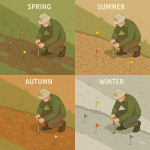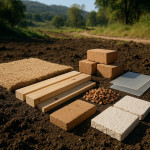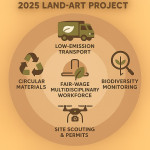Co-designing with landscape architects: workflow bridges that win big briefs
Want to land multi-million-euro outdoor projects? Start co-designing with landscape architects. This guide shows you, step by step, how to build solid workflow bridges that turn first meetings into award-winning consortium pitches.
Why co-design wins the largest briefs
Developers and city councils no longer look for isolated expertise. They want integrated design teams that deliver ecological impact, smooth buildability and memorable user experiences. Co-designing with landscape architects ticks all three boxes because:
- Holistic storytelling – Spatial design and ecological strategy merge into a single narrative that dazzles juries.
- Risk reduction – Environmental assessments, storm-water plans and planting schemes surface early, preventing costly redesigns.
- Faster permits – Joint drawings already incorporate biodiversity and accessibility codes, easing regulatory sign-off.
Building a workflow bridge with landscape architects
Step 1 – Align the project vision on day zero
Kick-off with a shared vision workshop instead of siloed brainstorming. Use a Miro board or a giant print-out to map client objectives, ecological KPIs and community benefits. Insert the complete zoning context by linking to the urban-planning synergy framework so everyone grasps boundary conditions.
Step 2 – Synchronise data in one BIM-GIS hub
Landscape architects rely on GIS layers—soil, hydrology, tree inventories—while architects juggle BIM models. Bridge the gap with cloud platforms such as ArcGIS GeoBIM or Speckle. Both tools allow live cross-referencing: a paving change in Revit instantly updates runoff calculations. See how drones enrich terrain data in this mapping workflow primer.
Step 3 – Co-source sustainable materials
Joint procurement can slash embodied carbon by 30 %. Landscape architects often keep databases of local stone yards, FSC-certified timber and low-carbon concrete blends. Add their suppliers to your material library to boost bid credibility. For deeper tactics, explore the sustainable sourcing roadmap.
Step 4 – Build feedback loops and decision gates
Create fortnightly design sprints. Each sprint ends with a decision gate where both disciplines validate 3D massing, grading, lighting and planting palettes. Tie feedback to measurable goals: thermal comfort, canopy coverage or daylight autonomy.
Step 5 – Co-present the final pitch
Clients love a unified front. Stage a narrative where the architect introduces form, the landscape architect covers nature-based solutions, and both reveal a cost-phased implementation plan. Embed links to the craft-design talent directory (expert outdoor artisans) to signal production readiness.
Tool stack comparison for seamless co-design
| Workflow Need | Tool Option | Best For | Cost (€/year) |
|---|---|---|---|
| 3D + GIS integration | ArcGIS GeoBIM | Enterprise projects | 5 200 |
| Real-time model exchange | Speckle | Open-source flexibility | 0–1 200 |
| Planting palette sync | Vectorworks Landmark | Detailed horticulture tags | 3 600 |
| Carbon footprint tracking | One Click LCA | Life-cycle analysis | 2 900 |
Common pitfalls and how to avoid them
- Late involvement – Invite landscape architects after concept freeze and you double grading costs. Engage them at pre-feasibility stage.
- File chaos – Mix DWG, IFC and shapefiles without a naming protocol and you burn hours. Adopt ISO 19650 conventions from day one.
- Budget siloing – Separate cost lines kill design ingenuity. Merge softscape and hardscape budgets to allow trade-offs.
- Client confusion – Two consultancies issuing contradictory updates erodes trust. Nominate a single point of contact.
FAQ
- Does co-designing with landscape architects increase design fees?
- You will invest around 10 % more in early phases, yet save 15–25 % on late-stage changes and bid-winning probability rises sharply.
- How early should I bring the landscape team on board?
- Right after site acquisition or RFP release. Early soil and hydrology insights guide massing and cut rework.
- Which contract model works best?
- A shared lump-sum or percentage of construction cost with clearly defined scopes encourages collaboration over task-hoarding.
- Can we co-design on small budgets?
- Yes. Start with a joint vision workshop and a cloud folder. Even a two-day sprint aligns core decisions for modest sites.
Quick knowledge check
Ready to win that brief?

Integrate these workflow bridges and watch your proposals stand out. You will deliver richer stories, tighter budgets and greener outcomes—exactly what selection panels crave. Start your next project by sending a co-design invitation today, and explore client onboarding tactics for landscape collaborations or refine your numbers with the 2025 landscape pricing guide.
CTA: Need an experienced partner? Browse certified collaborators in seconds on Artfolio and schedule your kickoff call this week.











